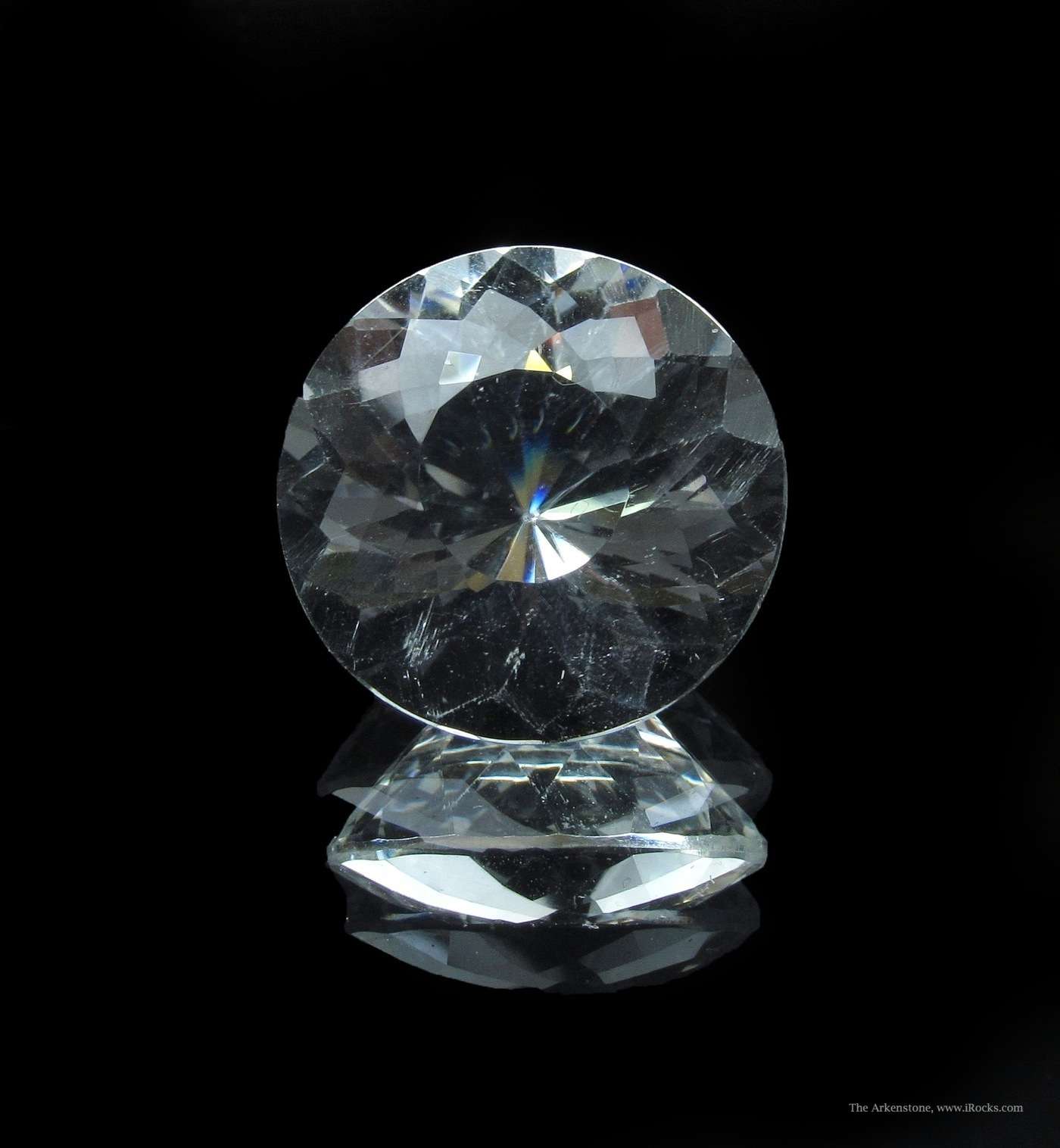Petalite Value, Price, and Jewelry Information
Gem-quality, colorless, facetable petalite is rare and desirable to collectors. More so if the stones are large and free of inclusions.
1 Minute Read
Gem-quality, colorless, facetable petalite is rare and desirable to collectors. More so if the stones are large and free of inclusions.
Start an IGS Membership today
for full access to our price guide (updated monthly).Petalite Value
What is Petalite?
A major source of lithium, the mineral petalite rarely occurs in gem-quality crystal form.
Does Petalite Make a Good Jewelry Stone?
Just below quartz in hardness and with perfect cleavage, petalites are best suited for earrings and pendants. These jewelry pieces receive minimal physical impact. Avoid ring use without a protective setting.
Although colorless, glassy crystals can make stunning faceted jewelry pieces, beautiful pale gray, white, yellow, greenish, and pink stones can also be found. Gem cutters occasionally cab or carve massive pink material from Namibia.
Phenomenal Petalites
Included cab-cut petalites may show a weak chatoyancy or cat's eye effect.
Some petalites from Myanmar may show a color change effect between daylight and artificial light.
This keystone step-cut petalite appears yellow-greenish in daylight but golden brown under other light sources. 2.19 cts, 9 x 8.4 mm, Myanmar. © The Gem Trader. Used with permission.
What is Castorite?
Crystal petalites are sometimes called castorites. When the mineral pollucite was discovered in Elba, Italy in 1846, it was named after Pollux, the twin brother of Castor in Classical mythology. The discoverers associated it with castorite, named after Castor, since both occurred in lithium-rich granite pegmatites at this source. Although castorite was later renamed petalite, the name pollucite remained unchanged.
Are There Synthetic Petalites?
Scientists have synthesized petalite for various commercial purposes. However, there is no known jewelry use for this material. There are also no known gem treatments for petalites.
Where are Petalites Found?
Notable gem sources include the following:
- Utö, Sweden: the type locality
- United States: San Diego County, California; Greenwood, Maine; Bolton, Massachusetts; North Bonneville, Wyoming.
- Londonderry, Western Australia: facetable material.
- Arassuahy, Brazil: large, clean masses.
- Bikita, Zimbabwe: considerable material mined for lithium content.
- Karibib, Namibia: colorless, transparent, and pinkish material.
- Afghanistan; Elba, Italy; Myanmar; Russia.
Stone Sizes
Faceted petalites are usually small. You can find faceted gems from Brazil for sale, ranging from 1 to 10 cts. Rough can range up to 20 cts. Some Brazilian and Namibian rough material has yielded somewhat larger stones in the 50-ct range.
- Smithsonian Institution (Washington, DC): 55 (colorless, Namibia): 48.3, 45.9, 26.6 (colorless, Brazil).
- Devonian Group (Calgary, Alberta, Canada): 14.8 (colorless. Australia).
- Private Collection: 48.25 (colorless).
Caring for Petalite Gemstones
Store your petalites separately from other harder gems to avoid scratching. Use a soft brush, mild detergent, and warm water for cleaning. Consult our gemstone jewelry cleaning guide for more recommendations.
Joel E. Arem, Ph.D., FGA
Dr. Joel E. Arem has more than 60 years of experience in the world of gems and minerals. After obtaining his Ph.D. in Mineralogy from Harvard University, he has published numerous books that are still among the most widely used references and guidebooks on crystals, gems and minerals in the world.
Co-founder and President of numerous organizations, Dr. Arem has enjoyed a lifelong career in mineralogy and gemology. He has been a Smithsonian scientist and Curator, a consultant to many well-known companies and institutions, and a prolific author and speaker. Although his main activities have been as a gem cutter and dealer, his focus has always been education. joelarem.com
International Gem Society
Related Articles
Black Diamond Value, Price, and Jewelry Information
Chameleon Diamond Value, Price, and Jewelry Information
Gray Diamond Value, Price, and Jewelry Information
Green Diamond Value, Price, and Jewelry Information
Latest Articles
Brazilianite Value, Price, and Jewelry Information
Ruby-Glass Composites vs Leaded Glass Clarity Enhancements
Morganite Buying Guide
How Do Amethysts Form?
Never Stop Learning
When you join the IGS community, you get trusted diamond & gemstone information when you need it.
Get Gemology Insights
Get started with the International Gem Society’s free guide to gemstone identification. Join our weekly newsletter & get a free copy of the Gem ID Checklist!
